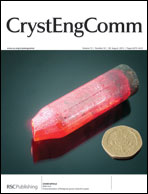Growth mechanisms of surface crystallized diopside
Abstract
The two glasses A and B of similar composition are melted and annealed at 870 °C for up to 20 h to initiate the surface crystallization of diopside. Phase and orientation analyses are performed using


 Please wait while we load your content...
Please wait while we load your content...